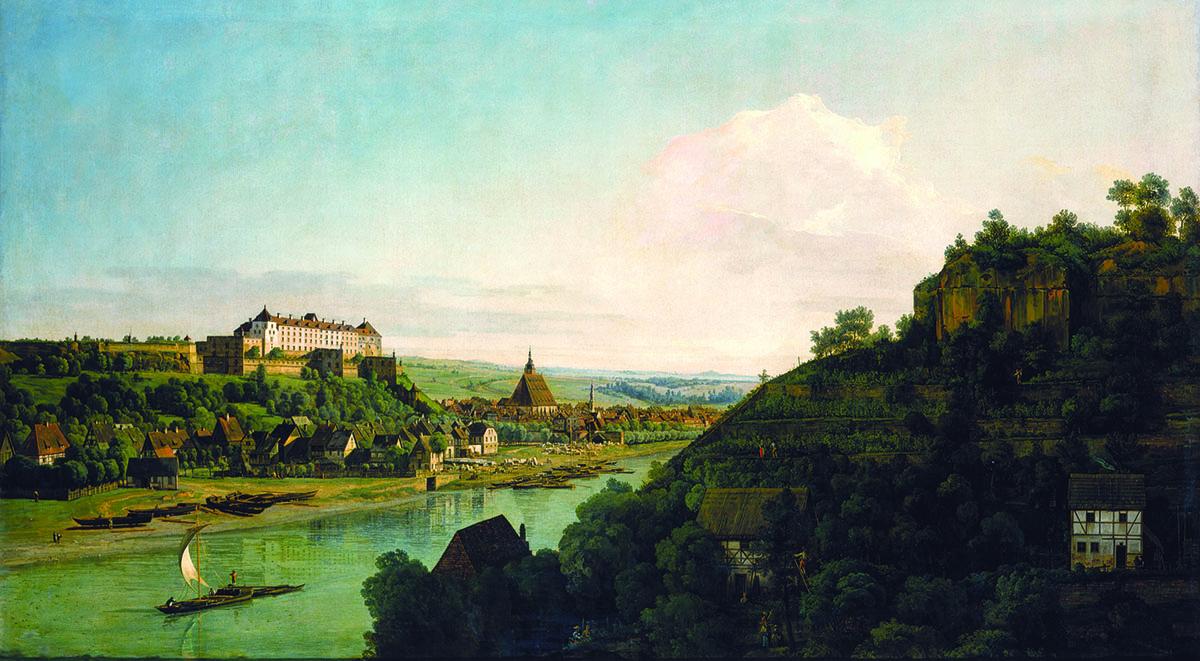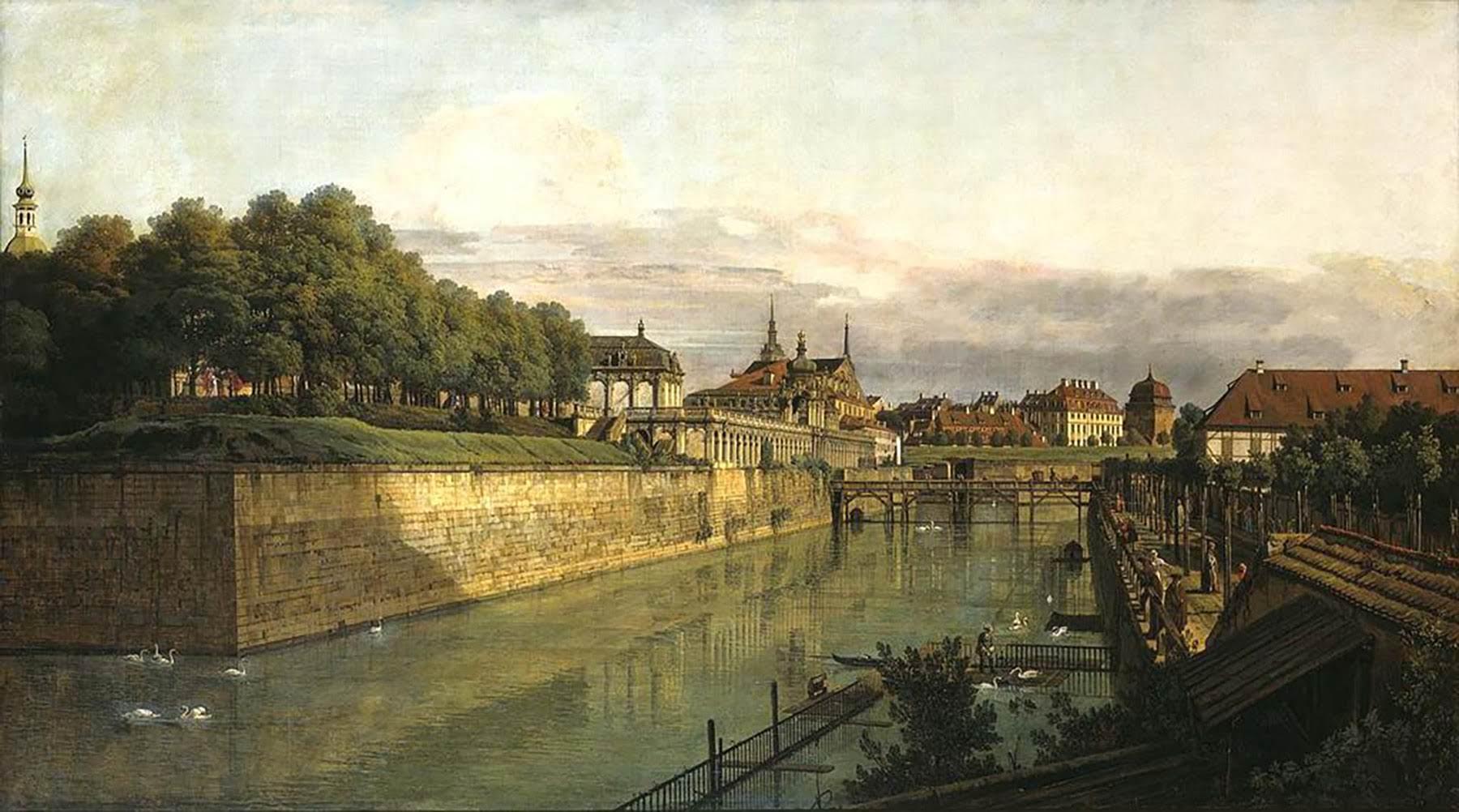Visitors to the exhibition will have the unique opportunity to view the majesty that was Dresden in the 1700s. One of the greatest cities of 18th-century Europe, it is only now, following its near-total destruction in the Second World War, being rebuilt to its former glory—with the aid of Bellotto’s pictorial legacy.
The Lure of Dresden: Bellotto at the Court of Saxony
In the 1740s, Frederic Augustus was engaged in a massive building campaign aimed at making his Saxon capital, Dresden, one of the most vibrant architectural and artistic centers in Europe, and he called the Venetian painter Bernardo Bellotto to court to document his accomplishments on a grand scale. Fulfilling this prestigious commission, Bellotto produced a series of majestic depictions of Dresden’s major buildings, grouped on the banks of the Elbe River, and of the nearby town of Pirna, with its stately fortress, Sonnenstein, perched on a cliff above the town.
Among the first paintings Bellotto completed after coming to the city was Dresden from the Right Bank of the Elbe, Above the Augustus Bridge. The painter crossed the bridge, seen at center, to the riverbank yard of a private residence. The changing skyline of the city spreads out from the left. The dome of the Frauenkirche, a massive Protestant church dedicated to the Virgin Mary, dominates the scene; the church, decades in the building, had been completed just a few years before Bellotto’s arrival. Near the end of the bridge rises the spire of the royal palace; just to its right are seen the first two levels of the Catholic cathedral, the Hofkirche, which would eventually feature its own spire, depicted in views of the town Bellotto painted later on. All of these monuments were either razed or gravely damaged in the bombings of 1945, but each has been rebuilt in the last 20 years.





























